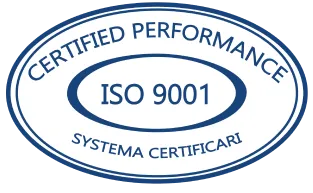Today, we’d like to show you a business central integration project we've done for one of our customers; we’re going to focus on the more practical side, which is a little bit different than what you're used to on our page.
Context
In simple words, a customer of ours, an architecture company, wanted to integrate Business Central (their primary ERP) with a Data Warehouse. But the problem was resources would become increasingly expensive, especially when it came to custom functionalities and fields. FYI, they needed to sync multiple objects, such as customers, sales transactions (invoices, payments, sales credit memos), currency exchange rates, purchase transactions (purchase invoices and purchase credit memos), vendors, general ledger table, dimension combinations (projects and cost centers), so Cristi, our colleague, helped them out.
Information flow
There were 2 information flows:
- Data Warehouse -> Business central – just dimension combinations
- Business Central -> Data Warehouse – the rest
Tools used in our Business Central integration
As stated in the title, Make.com was used for the workflow logic. Also, we had to create the Business Central modules (some sort of mini-app inside Make to access information from Business Central).
Logic
Now let’s take a look at the logic we’ve been talking about. Each circle represents a module (an app, basically) that carries an action (search item, repeater, create dimension combination, create JSON file, etc.). You’ll also be able to understand better by looking at modules’ names.



Issues (not everything goes as planned, does it?)
Yes, we’ve stumbled across some issues in our Business Central integration. The API had limits, meaning not all fields could be accessed. We tried traditional coding, but it proved time-consuming and costly. Then, we discovered a valuable tool that allowed us to create custom endpoints within minutes (to get the specific information we needed for our customers’ desires).
P.S. The tool (Simple Object Designer) offered other functionalities as well, such as creating custom fields and exposing fields to the interface.
Results
Thanks to the tools mix, we delivered the integration quickly and efficiently. We also adapted to our customers’ feedback and managed to deliver within the agreed timeframe. The integration has been up and running for several months without issues. Don’t take our word for it, see what our customer had to say:
“[...] Makeitfuture developers would build a prototype integration automation in literally a couple of hours.
We could review the integrated system against data examples to refine the selected fields. Next, we were able to hold a short workshop where the systems consultants were able to enter data into the master system and see the data transformed and passed to the target system is real time and have any changes undertaken in the same meeting.
Needless to say, this gave the integrations development a significant acceleration.
For one specific integration, this was essential, as it felt like we were the first organisation to integrate two the systems.”
Customer’s POV
“[...] The programme was integrating MS Dynamics, which included custom fields, to nine other applications. So, the standard Dynamics APIs could not be used. Makeitfuture recommended a tool called Simple Object Designer from Hougaard.com to build the APIs to and from Dynamics, Make.com to build the integration automations to and from Azure Service Bus and the applications [...] We could review the integrated against data examples to refine the selected fields. Next, we were able to hold a short workshop where the systems consultants were able to enter data into the master system and see the data transformed and passed to the target system in real time and have any changes undertaken in the same meeting. Needless to say, this gave the integrations development a significant acceleration. [...] We had a detailed specification of the 200+ fields required in the target system but no definition of the data fields from the target system. Using the classical integrations method would not have worked [...]
I am not being endorsed in any way for recommending Make.com as a product or Makeitfuture as an integrations partner but want to share my positive experience of working with a great product and partner company. Please follow the link to Makeitfuture for more technical information on the project and their capabilities.”
Did the story provide valuable insights for you and your business? If you ever find yourself in a similar situation, let’s schedule a discovery call to better understand














